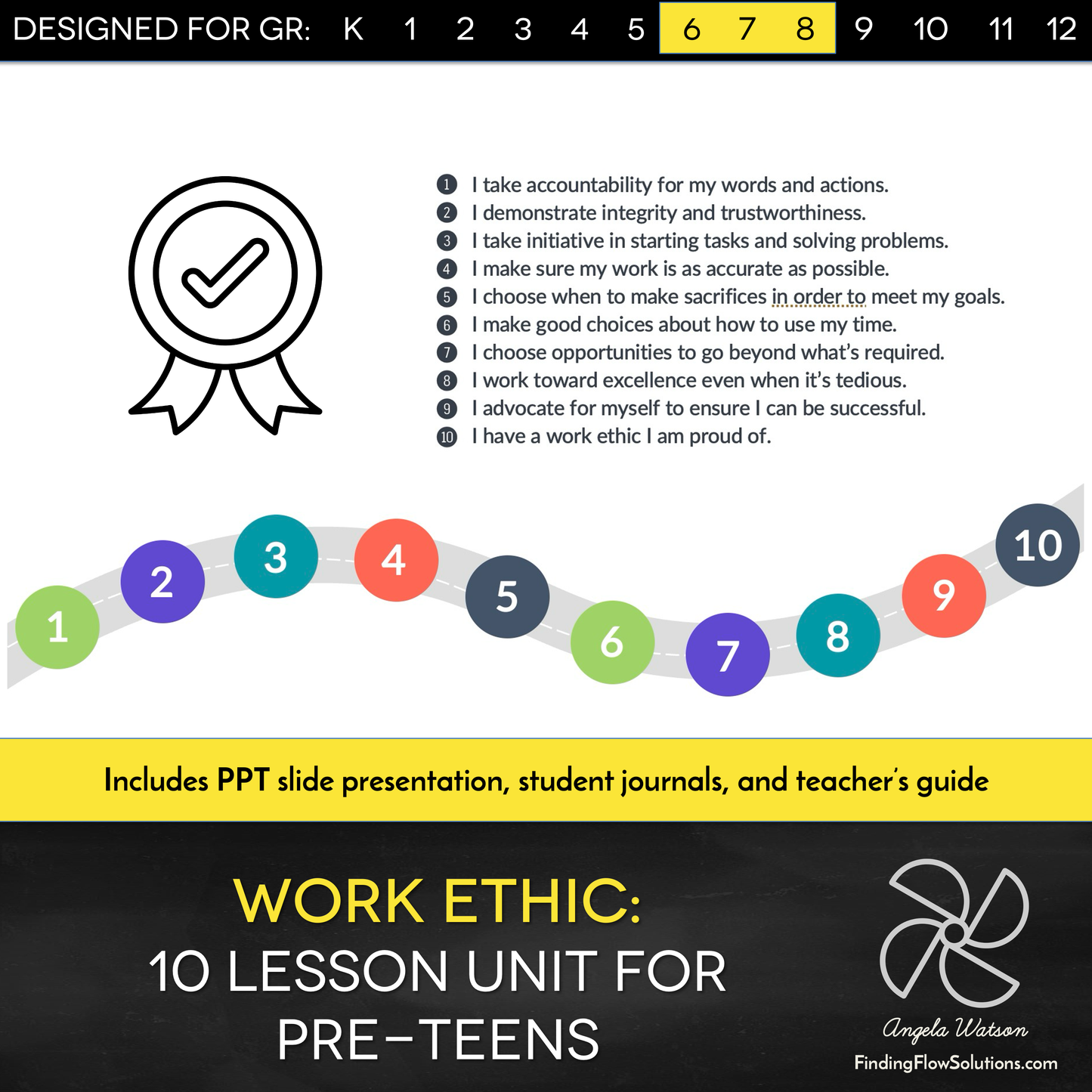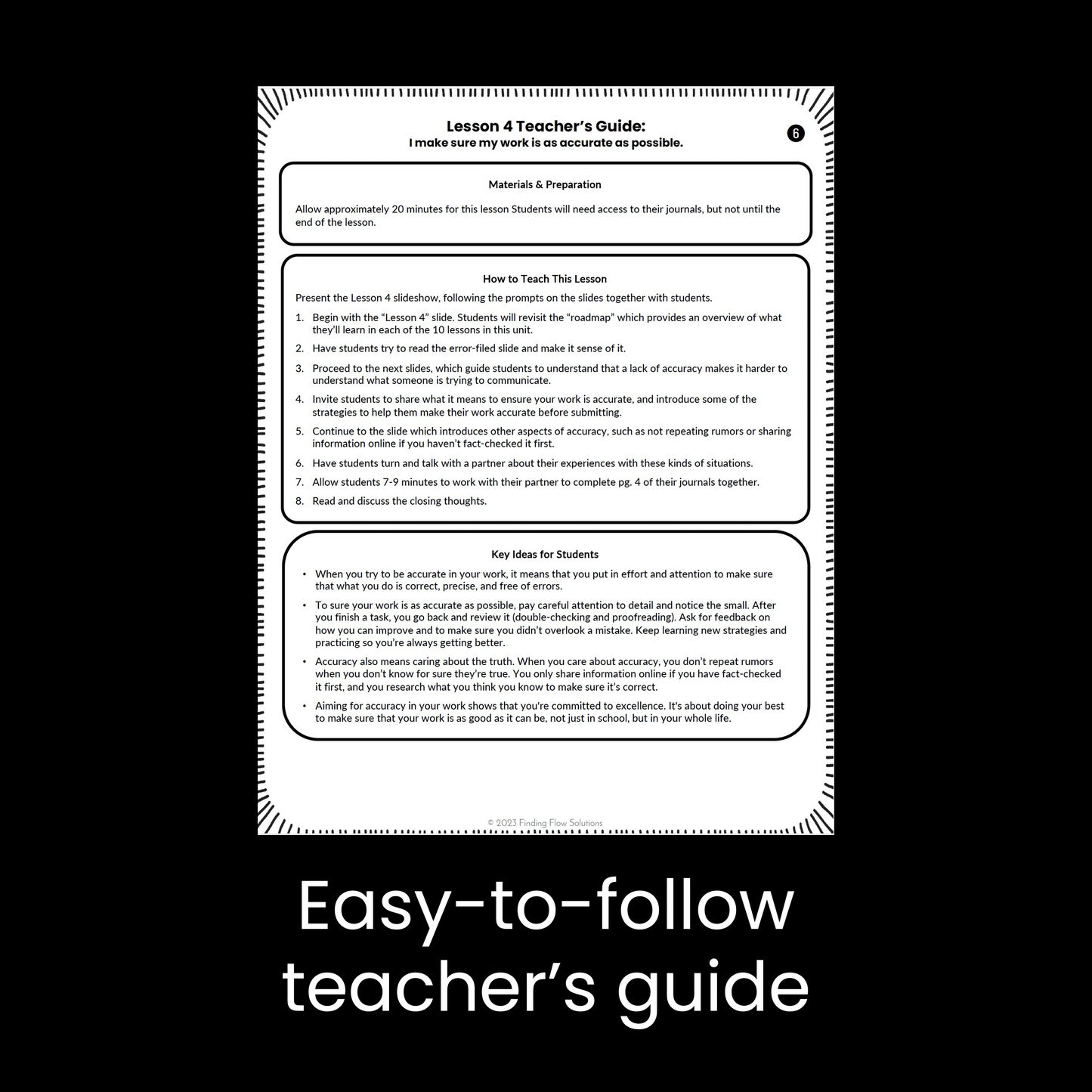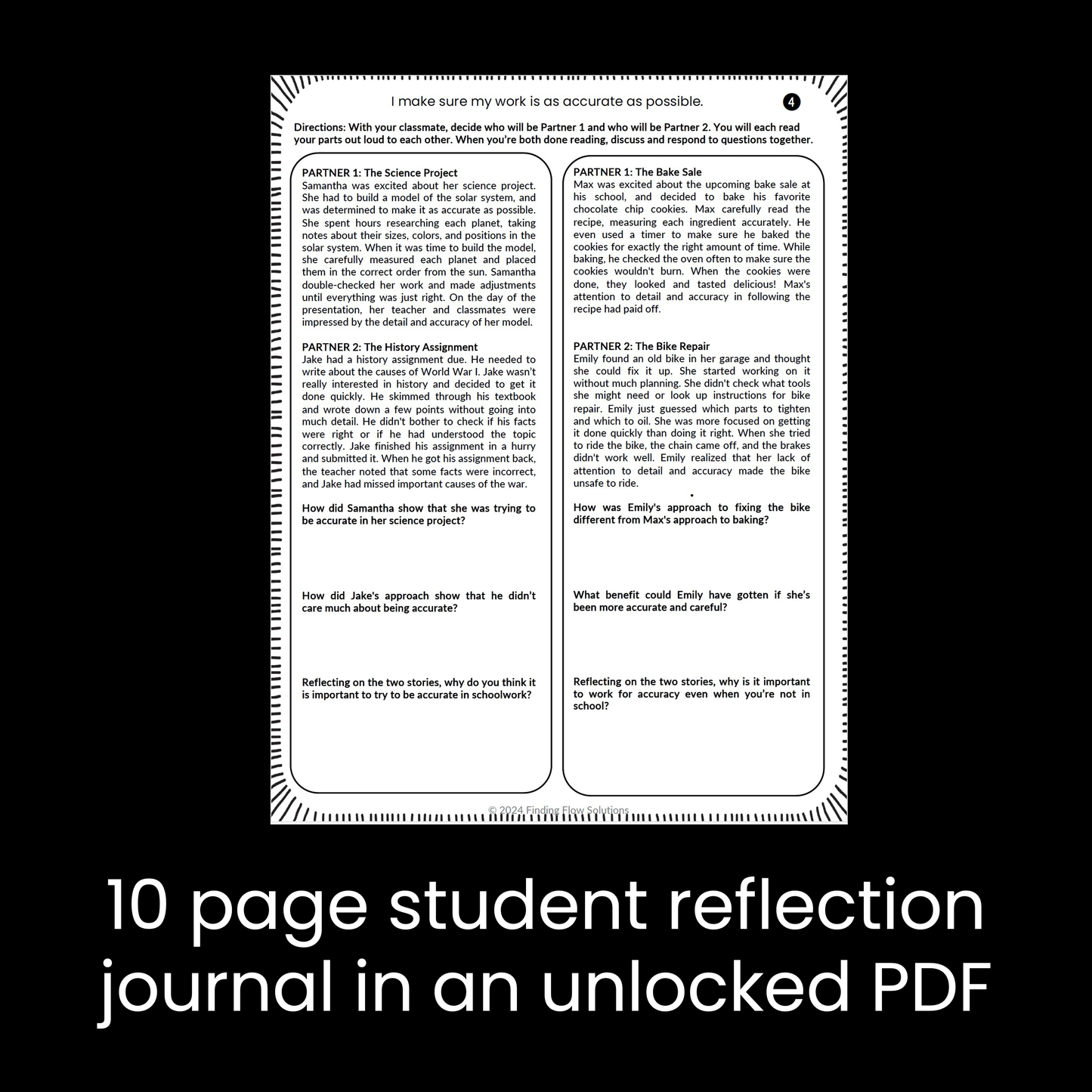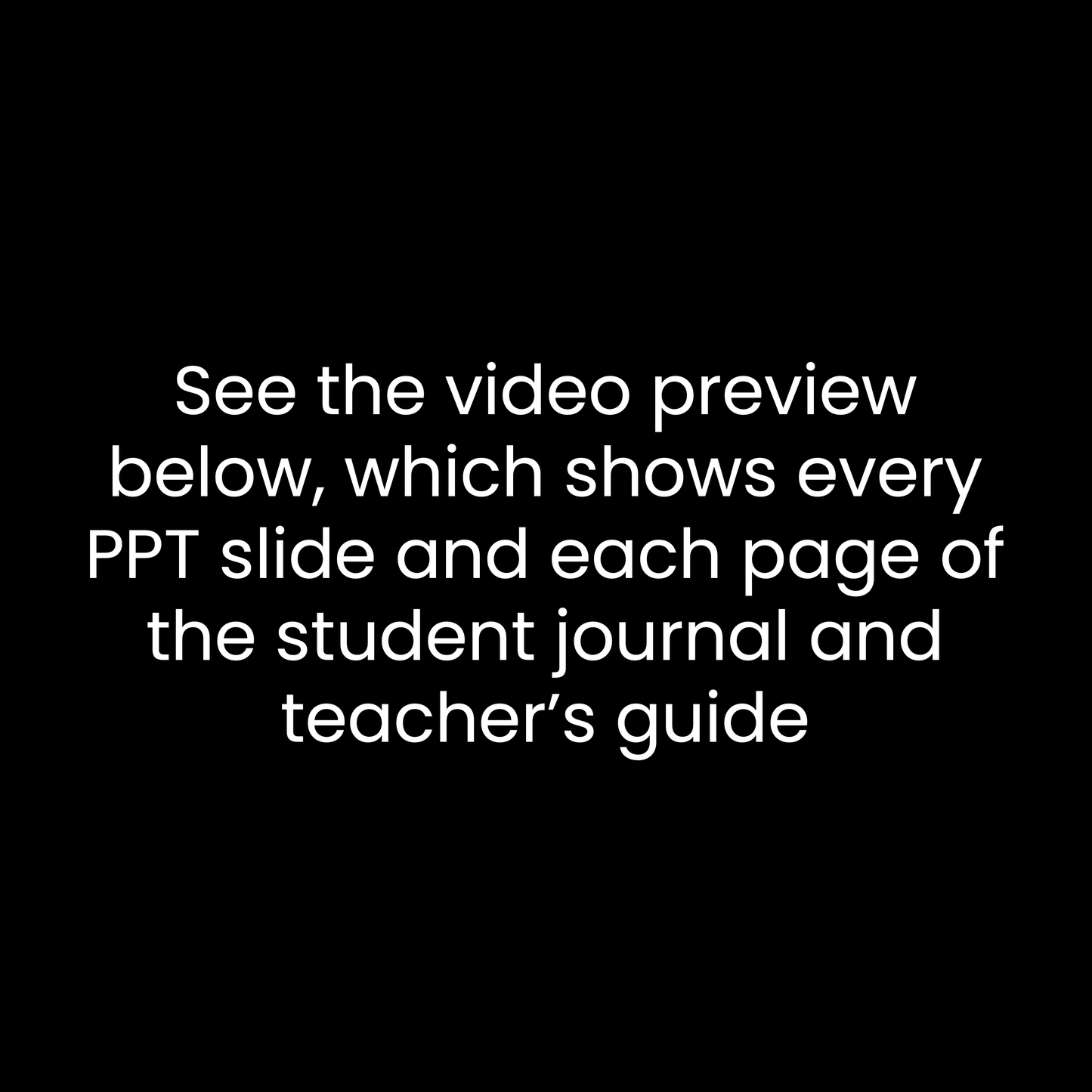Truth for Teachers
Work Ethic and Responsibility: 10 lessons with PPT and student journals
Work Ethic and Responsibility: 10 lessons with PPT and student journals
Couldn't load pickup availability
Your students can take accountability for their work, choose opportunities to go beyond what’s required, and demonstrate trustworthiness and integrity. This 10 lesson unit helps students uncover for themselves the why and how beyond a responsible work ethic.
Through this 10-lesson unit, students will experiment with approaches that help them meet the following goals:
- I take accountability for my words and actions.
- I demonstrate integrity and trustworthiness.
- I take initiative in starting tasks and solving problems.
- I make sure my work is as accurate as possible.
- I choose when to make sacrifices in order to meet my goals.
- I make good choices about how to use my time.
- I choose opportunities to go beyond what’s required.
- I work toward excellence even when it’s tedious.
- I advocate for myself to ensure I can be successful.
- I have a work ethic I am proud of.
These lessons are designed to be no-prep or minimal prep. You don’t have to master any of these skills yourself before introducing them to students, as you’ll be learning alongside each other. Included are:
- A teacher’s guide (1 page per lesson): This tells you how to prepare and gives you the key ideas taught in the lesson.
- An editable slideshow presentation to guide you and your students through each lesson: Teaching the concepts and introducing activities to students is super simple: just follow the prompts on each slide in PowerPoint! 120+ slides are included, all with professionally designed graphics. All video clips are embedded in the slides so you can play them offline and won’t have problems with website blockers.
- A 10-page student self-reflection journal in both printable and typable formats: The length of the journal depends on the unit, but the format is designed to minimize printing and paper use with no filler, fluff, or half blank pages. You can also assign the journal to students in your LMS (such as Google Classroom) and keep everything digital.
MORE IN THIS CURRICULUM LINE:
- Unit 1: Foundations of Flow
- Unit 2: Neuroplasticity and Growth Mindset
- Unit 3: Metacognition and Perspective
- Unit 4: Self-Advocacy and Self-Regulation
- Unit 6: Collaboration and Communication
- Discounted bundle of all 6 middle school units
FAQ:
What grade levels is this for?
This is geared for preteens (middle school). While younger students may not be as adept at metacognition, they can still benefit from being exposed to these concepts and begin to apply productivity skills in the classroom. There are units designed for high school in this product line, but if you want to teach this specific topic to high schoolers, it should be developmentally appropriate.
What subject areas is this for?
These units are designed to facilitate productivity and deepen student understanding in EVERYTHING they learn, both in school and outside of it. These habits of mind will support students in reading comprehension and writing, along with scientific and mathematical thinking. There are several opportunities in each unit to have students practice applying what they are learning about productivity to your usual curriculum and lessons.
Can this be used outside the regular classroom setting?
Yes! Any group setting will work: homeroom, advisory periods, study hall periods, before/after school programs, group tutoring, etc.
Can students do these lessons entirely on their own?
No, there is guided instruction in every lesson that the teacher facilitates, and multiple opportunities for students to learn with a partner and group. A self-guided version for individual students (in the form of a journal) will be available in 2024.
How much class time do the lessons take up?
Most lessons take 15-30 minutes. The only exception are lessons that guide students to apply productivity practices to your curriculum, meaning students will be working on your usual activities, concepts, and skills during the implementation of the Finding Flow lessons.
How do I pace the lessons with my students?
Any way that fits best into your curriculum! You can implement one lesson each day, one lesson each week, or 2-3 each week.
Still not sure? Try out the FREE 5 unit lesson on flow theory here first.
Share











